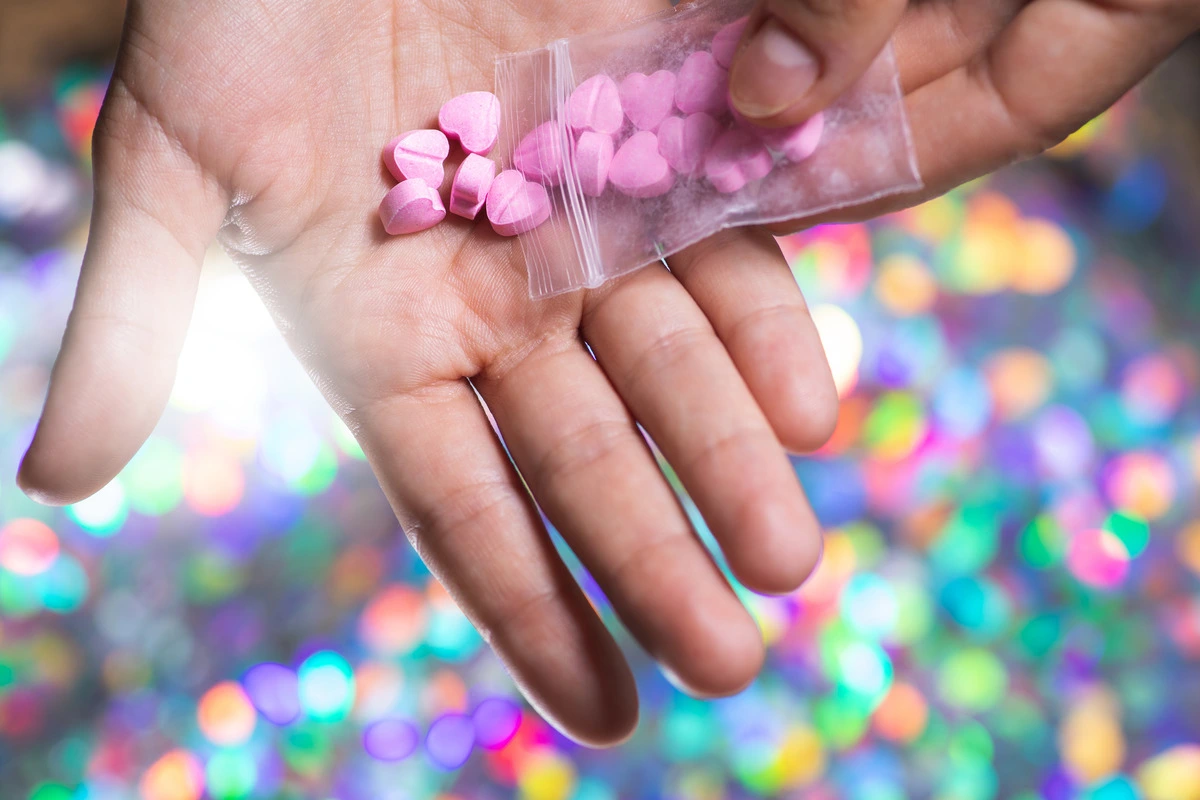
If you’ve recently experimented with Molly or MDMA, gaining a thorough understanding of how long it remains detectable in your urine is paramount for several critical reasons.
Whether you’re anticipating a drug test or contemplating seeking addiction treatment, comprehending the intricacies of Molly’s detection in urine is essential. Let’s embark on a comprehensive exploration of this topic to equip you with detailed insights that can inform your decisions moving forward. Empower yourself with knowledge about Molly’s detection in urine to make informed decisions regarding drug testing or seeking addiction treatment.
Contact Anchored Tides Recovery today to learn more about our specialized programs for women struggling with substance abuse.
What is Molly (MDMA)?
Molly, short for MDMA (3,4-methylenedioxy-methamphetamine), is a synthetic psychoactive drug that alters mood and perception. It belongs to the amphetamine class of drugs and is chemically similar to both stimulants and hallucinogens. Commonly sold in powder or crystal form, Molly is often ingested orally, although it can also be snorted or injected.
Effects of Molly (MDMA)
When ingested, Molly (MDMA) profoundly influences the central nervous system by increasing the activity of three key neurotransmitters: serotonin, dopamine, and norepinephrine. The enhanced neurotransmitter activity leads to a range of sensory and emotional effects, significantly altering the user’s mood and perception. Here’s a closer look at the typical effects experienced during and after taking Molly:

Physical and Psychological Effects
- Increased Energy and Euphoria: Users often experience a significant boost in energy levels, similar to the effects of amphetamines. This is accompanied by feelings of euphoria, which are due to the increased release of serotonin and dopamine, neurotransmitters associated with pleasure and reward.
- Enhanced Sensory Perception: Molly can heighten the senses, making colors seem more vibrant, sounds more distinct, and touch more sensitive. This enhanced sensory input can contribute to the overall experience of music and social interactions, often making it a popular drug at parties and music festivals.
- Heightened Empathy and Emotional Warmth: One of the hallmark effects of Molly is the increased feeling of emotional connectedness to others. Users may feel more empathetic, emotionally open, and connected, which is attributed to the surge in serotonin levels.
- Altered Perception of Time and Reality: Molly can distort the user’s sense of time, often making the external world seem like it is moving slower or faster than usual. This can also affect how users perceive reality, occasionally leading to hallucinations or intense emotional experiences that seem out of sync with actual events.
After-Effects and Potential Risks
While the immediate effects of Molly can be appealing to users seeking heightened emotional and sensory experiences, there are significant after-effects and potential health risks:
- “Come Down” Effects: As the drug wears off, users may experience a “crash” or “come down,” where the initial high is replaced by feelings of depression or lethargy. This occurs as the brain’s neurotransmitters that were initially elevated start to deplete.
- Dehydration and Hyperthermia: Molly increases physical activity and reduces the perception of exhaustion, which can lead to dehydration and dangerously high body temperatures, especially in crowded, warm settings like dance floors.
- Long-Term Mental Health Risks: Regular use of Molly can lead to long-term psychological issues, including depression, anxiety, and memory problems. This is due to the drug’s impact on brain chemistry, particularly the depletion of serotonin over time.
- Dependency and Tolerance: With frequent use, individuals may develop a tolerance to the effects of Molly, necessitating larger doses to achieve the same high. This can increase the risk of addiction and exacerbate both the physical and psychological risks associated with the drug.
Understanding Molly (MDMA) Detection Windows
- Urine Testing
Urine tests are the most common form of drug testing for molly due to their non-invasive nature and relatively long detection period. Molly can typically be detected in urine within:
- 2 to 5 hours after use
- Remains detectable for up to 3 to 4 days after the last dose
However, for heavy or frequent users, molly might be detectable for a slightly longer period.
- Blood Testing
Blood tests are less common due to their invasive nature but can detect substances for a shorter period. For molly, it can be detected in the blood:
- Within 1 to 2 hours after ingestion
- Lasts up to 1 to 2 days post-consumption
This makes blood tests suitable for detecting very recent use of the drug.
- Hair Testing
Hair testing offers the longest detection window, providing a record of drug use over time:
- Molly can be detected in hair follicles about 7 days after use
- Can continue to be detectable for up to 90 days or more depending on the length of the hair sample and the time since use
This test is used to establish a pattern of drug use over several months.
- Saliva Testing
Saliva testing is a useful tool for detecting recent drug use, especially in roadside checks or similar situations:
- Molly can be detected in saliva 10 minutes after ingestion
- Stays detectable for up to 1 to 2 days
This test is favored for its quick results and because it non-invasively assesses recent drug use.
Factors Affecting Detection Times
It’s important to note that individual factors such as metabolic rate, body mass, age, hydration level, physical activity, and overall health can affect how quickly molly is metabolized and hence, the detection window in different testing methods.
- Individual Metabolism: Each person’s metabolism is unique, impacting how quickly drugs are processed and eliminated from the body.
- Frequency and Duration of Use: Chronic users may have a buildup of Molly metabolites in their system, leading to prolonged detection times.
- Body Mass and Composition: Individuals with higher body fat percentages may retain Molly for longer periods due to its lipophilic nature.
Importance of Seeking Addiction Treatment
If you or someone you know is struggling with Molly or MDMA addiction, seeking professional help is crucial. Addiction to Molly can have detrimental effects on your physical and mental health, relationships, and overall well-being. At Anchored Tides Recovery, we understand the unique challenges women face in addiction recovery and offer specialized programs tailored to their needs.
Our Approach to Addiction Treatment
At Anchored Tides Recovery, we believe in a holistic approach to addiction treatment that addresses the root causes of addiction and promotes long-term recovery. Our comprehensive programs combine evidence-based therapies with holistic techniques to provide women with the tools and support they need to overcome addiction and reclaim their lives.
Our Services Include:
- Individual Therapy: One-on-one therapy sessions with experienced counselors to explore underlying issues and develop coping strategies.
- Group Therapy: Peer support groups where women can connect with others facing similar challenges and share experiences.
- Dual Diagnosis Treatment: Specialized treatment for co-occurring mental health disorders, such as depression or anxiety, which often coexist with addiction.
- Family Therapy: Involvement of family members in the recovery process to rebuild relationships and create a supportive environment.
- Holistic Therapies: Incorporation of holistic therapies such as yoga, meditation, art therapy, and mindfulness practices to promote overall well-being.
- Aftercare Planning: Development of a personalized aftercare plan to support women as they transition back into their daily lives and maintain sobriety.

FAQs
How long does Molly stay in your system for a drug test?
Molly can typically be detected in urine for 3-4 days, in blood for 1-3 days, and in hair for up to 90 days.
Can drinking water help flush out Molly from your system?
Drinking water can help flush out toxins from your body and may potentially reduce the detection window for Molly in urine.
Is Molly addictive?
Yes, Molly and MDMA can be addictive, leading to physical and psychological dependence with prolonged use.
What are the signs of Molly addiction?
Signs of Molly addiction may include increased tolerance, withdrawal symptoms, cravings, neglecting responsibilities, and relationship problems.
How can Anchored Tides Recovery help with Molly addiction?
Anchored Tides Recovery offers specialized addiction treatment programs tailored to women, combining evidence-based therapies and holistic approaches to promote lasting recovery.


































